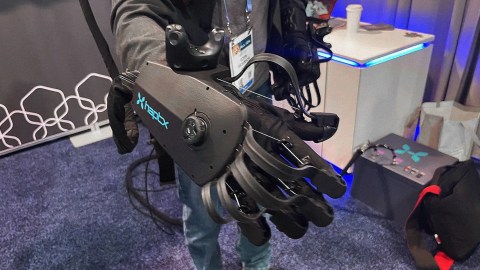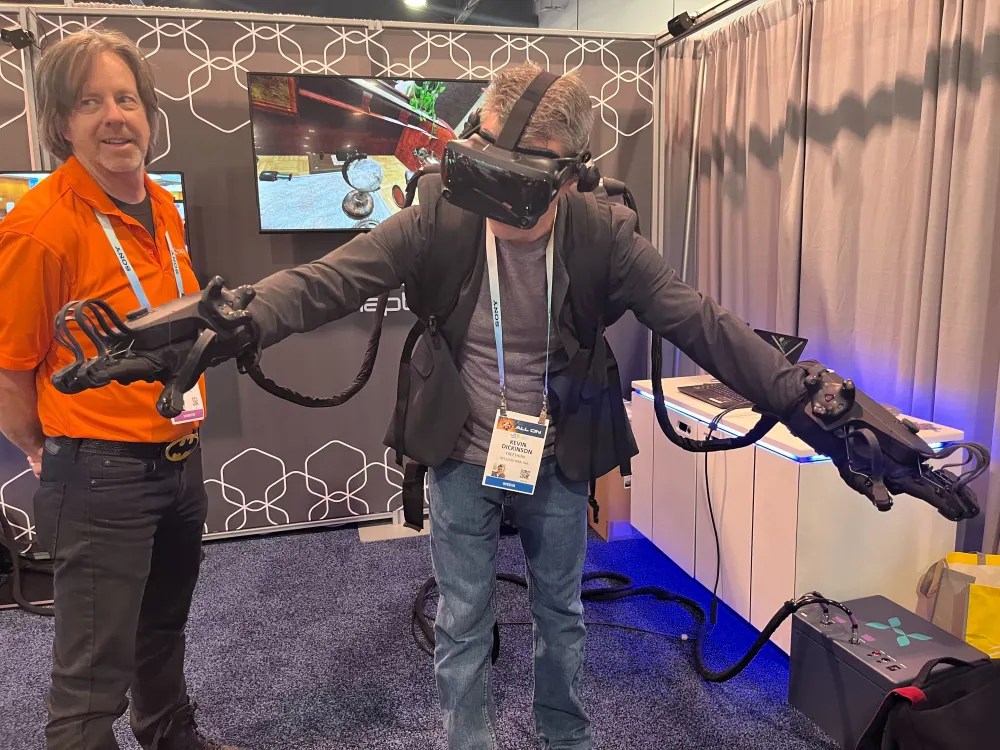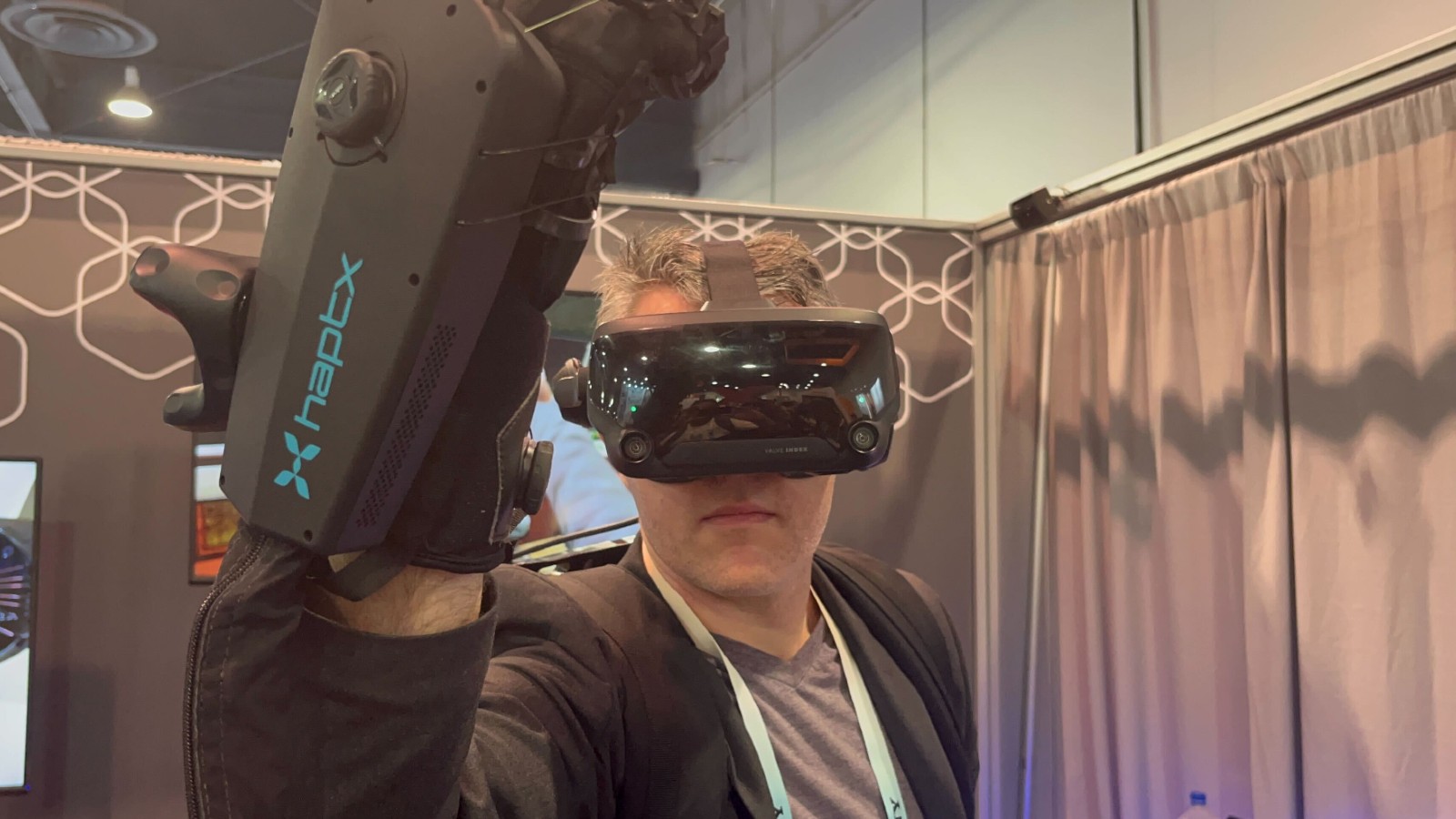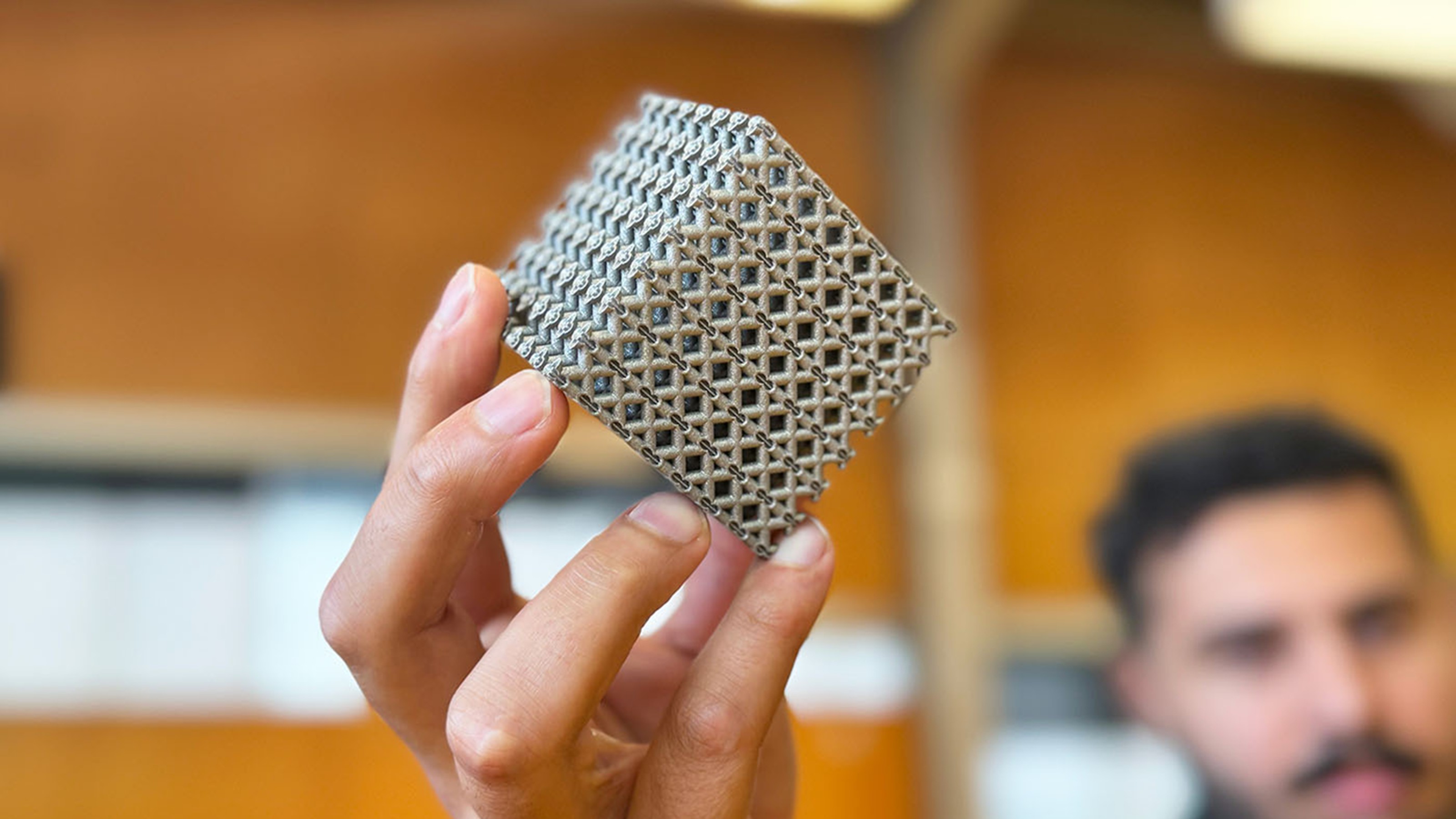We tested the most advanced haptic gloves in the world

For all the incredible advances in virtual reality devices, the worlds they generate still feel more virtual than real. That’s because much of the current development has focused on how those worlds look and sound. But humans experience the real world through many other senses — importantly touch.
“What if you want to realistically simulate something like cracking an egg?” Linda Jacobson, director of marketing at HaptX, asked Freethink. “It’s one thing to do it visually and to create a sound. But it’s a whole other thing if you want to simulate the rigidity of the eggshell and then couple that with the collapse of the breaking shell and the liquidy yolk spilling out. How do you do that in a way that doesn’t break the suspension of disbelief?”
HaptX’s answer to that question is a haptic glove that simulates high-fidelity touch in the virtual world. HaptX gave Freethink the opportunity to try the device at this year’s CES show in Las Vegas, and the experience was wild.
Getting in touch with the virtual world
According to Joe Michaels, HaptX’s chief revenue officer, the company has spent more than a decade developing its advanced “microfluidic” technology.
It starts with compressed air, which is filtered into a device called an air controller. When a user interacts with an object in a virtual space, this controller sends air to specific points on the glove. The air fires actuators housed inside the glove that press against the user’s palm and fingertips, providing tactile feedback that mimics “touching” the object. A “tendon system” also generates a resistive force that simulates the virtual object’s size and shape.
In our demo, we were placed in a virtual room with a giant desk and allowed to play around. We opened draws, flicked switches, spun a globe, and wrote our names with a pen. Each object felt similar to how it should be in real life. In a standout moment, we placed a giant clock gear on our finger and rolled it across the desk. When we rolled it across the fingertips of our other hands, we could discern each of the gear’s individual teeth as they traveled across our skin.

At another point in the demo, we used one hand to pet a cat and the other to stroke a bonsai tree (as one does). The glove was able to provide differing sensations for each hand simultaneously. The cat was smooth and continuous, while the tree poked us with individual prickly points.
Michaels noted that the upcoming HaptX Gloves G1 version of the tech — which was not available for demo at CES — will add vibration feedback to create finer distinctions in textures. So, next time we pet the cat, it may feel more like petting soft fur. And, who knows, it may even purr warmly in response.
Training through touch
For those hoping to add HaptX to their dream gaming rig, we have some bad news for you: The company is currently developing the technology specifically for industrial, manufacturing, and government. While the technology has a wide range of applications in these sectors, the biggest one is training.
“For any kind of VR content where you’re trying to teach someone how to use their hands, this is an ideal tool,” Michaels pointed out. “When you’re learning to do something, you need to build muscle memory. You need to repeat a motion over and over until you know how to do it. That’s only possible when you’ve got realistic touch feedback.”
For instance, HaptX is currently working with the US Army to provide training for future medics. Inside simulated combat environments, these trainees can learn battlefield procedures such as tying tourniquets and injecting needles. With the Glove GI, their virtual patients can offer feedback that is more immediate and practical than a rubber dummy.
“You don’t want to train on a mannequin if you can help it,” Michaels says, adding, “You certainly don’t want to train on your buddy.”

Other training opportunities include teaching pilots to fly planes, surgeons to perform surgery, and technicians to perform tricky repairs. If paired with a large language model AI, such simulated environments could help professionals like physical therapists hone the hands-on and social aspects of the job simultaneously.
Another area Haptx is exploring is the field of robotics. A robot outfitted with dexterous, human-like hands could be sent onto a site that is too dirty, dangerous, or distant for a human. If the operator is outfitted with the G1 Glove, they could feel what the robot feels, offering them more precision and immersion in their work while also keeping them safe. In fact, HaptX is already working with Sanctuary AI, a company that designs general-purpose robots, to advance this application.
“You can operate a robot, and place your skills, and yourself, anywhere in the world,” Michaels said.
A new virtual dimension?
Looking ahead, HaptX plans to fine-tune its current dev kit to make it more effective. They also aim to begin developing the technology that immerses the body more fully.
It’s amazing when you think about how important it is to touch the world around us. It’s such a deep, meaningful experience.
Linda Jacobson
For instance, when lifting something in real life, we don’t only use our fingertips. We use our whole arms. To get a better sense of that weight, HaptX needs to find a way to provide feedback to the arm and, if the virtual object is heavy or large enough, the upper body too. Ultimately, the company’s goal is to find a way to immerse the whole body into the virtual world so virtual reality applications like training become even more useful to the user.
“What’s real, and what’s virtual? That’s where we’re going, and it’s going to get there sooner than you think,” Michaels concluded.
Before that future arrives, however, it’s still fascinating how even the relatively simple touch HaptX has managed at this early stage already expands the virtual space with whole new dimension.
“It’s amazing when you think about how important it is to touch the world around us,” Jacobson said. “It’s such a deep, meaningful experience.”
This article was originally published by our sister site, Freethink.





